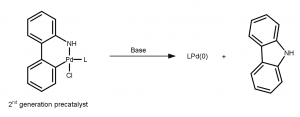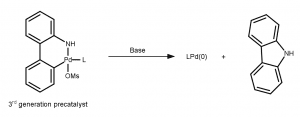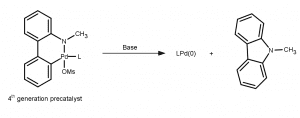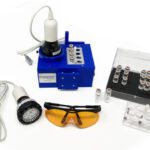Palladium precatalysts is an efficient solution to generate in-situ the LnPd(0) needed for the reaction. These precatalysts are generally air and moisture stable.
The first palladacycle precatalyst has been reported by Herman and Beller in 19951. Since then Buchwald laboratories has developed several types of palladium.
The first generation of Buchwaldpalladium precatalysts are phenethylamine derivatives. In presence of a base the LPd(0) can be generated in-situ.

The second generation of Buchwaldpalladium precatalysts are 2-aminobiphenyl derivatives. These precatalysts can be activated at room temperature.

The third generation of Buchwaldpalladium precatalysts are methylsulfonate salt of 2-aminobiphenyl derivatives. These precatalysts are compatible with bulky ligands and show longer stability in solution.

The fourth generation of Buchwaldpalladium precatalysts are methylsulfonate salt of 2-methylaminobiphenyl derivatives. These precatalysts are compatible with bulky ligands and show longer stability in solution.

1 Herman,W.A.; Beller,M. Angew. Chem. Int. Ed., 1995, 34, 1844-1848.


